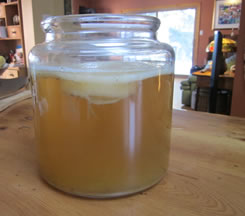Dr. David Brownstein – whose blogs I follow – posted this information today. I’ve just added in some nutritional information for your health!
Recently, the U.S. EPA reported that common chemicals (polybrominated diphenyl ethers– PBDE’s) found in nearly all our homes are contributing to a rash of thyroid problems. This class of chemicals is mainly used as a fire-retardant. PBDE’s are also found in a variety of household items including computers, televisions, carpeting, furniture and mattresses. PBDE’s are made from bromine. Bromine is also used to keep swimming pools and hot tubs clean. It is used as a pesticide, as well as in brominated vegetable oil which is used as an emulsifier in many citrus flavoured soft-drinks. (Source: https://en.wikipedia.org/wiki/Bromine)
Bromine is from the family of halides. This chemical family contains iodine, fluoride and chlorine as well. The reason we are seeing such a high prevalence of iodine deficiency and thyroid disorders in humans is due, in large part, to the excess exposure of bromine from our modern conveniences. Bromine exposure causes our bodies to excrete iodine. If we don’t supplement with extra iodine, bromine will bind to receptors in the body that are supposed to be binding with iodine. In effect, bromine will replace iodine throughout the body.
What are the consequences of excess bromine levels?
The consequences are severe; increased rate of cancer of the breast, thyroid, ovaries, uterus and prostate are due, in part, to bromine toxicity. Also, we are seeing dramatically increased rates of autoimmune illnesses including autoimmune thyroid disorders. People with a serious illness have markedly elevated bromine levels.
So, what can you do?
The main treatment for excess bromine is to avoid bromine exposure. Eat foods that do not contain bromine such as organic fruits and vegetables. Avoid bread, pasta and cereal that contain brominated flour and citrus-flavoured soft drinks like Mountain Dew. Next, supplement with enough iodine to allow your body to detox from bromine – excellent food sources of iodine include sea vegetables (sea vegetables like dulse, kombu, kelp can be added to your cooking water, and soups and stews, and you can sprinkle it on top of food to replace salt – for more recipes, visit https://www.whfoods.com).
Finally, supplement with antioxidants like Beta Carotene, vitamins C and E, selenium and zinc that help your detoxification system function optimally. It’s easy to recognize foods rich in antioxidants because they have the brightest colours. Enjoying a spectrum of different coloured foods will allow you to enjoy the benefits of a spectrum of antioxidants.
Incoming search terms:
- bromine poisoning from hot tub

